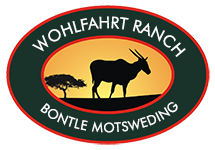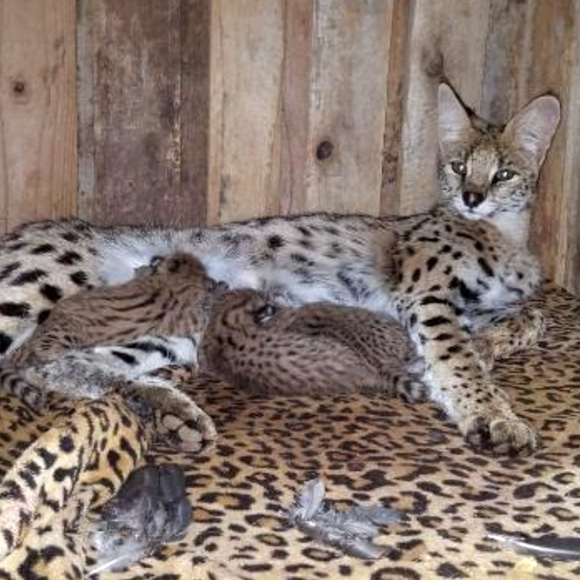INSURING SUSTAINABILITY AND SURVIVAL THROUGH BREEDING
In 2017 our breeding passion grew even stronger and we’ve started focusing on certain animals, which we have favoured.
The purpose of this development in breeding specific animals is to ensure the sustainability and survival of the species. The long-term goal is to expand and constantly revitalize the genetics of the breeding programs.
We want to give our animals a safe haven where they can thrive in a natural habitat, which will then ensure their pre-existence.
KINGS WILDEBEEST
IDENTIFYING CHARACTERISTICS
Bull:
Shoulder height +/- 1.5m high.
Mass: +/- 250kg
Cow:
Shoulder height +/- 1.3m high
Mass: +/- 180kg
In February 2012 Piet du Toit presented the kings wildebeest on his first game auction. The bull was sold on that auction for R5, 100,000 + VAT. After that auction there were many farmers who looked for King Wildebeest. At that stage the King Wildebeest was very scarce, and many in the game industry was unfamiliar with the King Wildebeest.
In June 2013 a meeting was arranged by existing King Wildebeest breeders with a view to pen down the characteristics of the King Wildebeest and to set a standard. The meeting was held at the WRSA offices in Pretoria. A huge effort was made by the organizers to get all the farmers and breeders that were interested in King Wildebeest together. Any one was welcome and all were invited, not just the existing King Wildebeest breeders.
There was a big interest and more people arrived at the meeting than was expected. The hall was packed to capacity. Some King Wildebeest breeders brought photographs of their King Wildebeest and these were displayed on large screens. Everyone present could give comments and the characteristics was discussed at length by all who attended.
The characteristics as determined by the King Wildebeest breeders in June 2013
- A King Wildebeest must have a grey/blue to dark blue/black colour on his body, similar to the colour of the ordinary blue wildebeest and darker.
- The tail, mane and beard must be white. King Wildebeest are born with a white tail, beard and mane.
- The nose and mouth around the eyes and inside the ears must be pink in colour. This is a characteristic of all King Wildebeest, although some may be lighter pink and some darker pink.
- The colour of the face of the adult King Wildebeest should be mostly or completely white. At a younger stage the face has darker shades of brown and black which will turn lighter as the King Wildebeest grows older.
- The King Wildebeest must have a white line on its back from where the mane ends to his rump.
- If the King Wildebeest has a spot on his body, these spots should be identical on both sides of the animal.
How did the King Wildebeest originate?
The old Boer name for the King Wildebeest was “Bont Wildebeeste”, due to their appearance. The King Wildebeest was captured for breeding purposes. All the original “Bont Wildebeeste” originated directly from nature where they roamed freely on hundreds and thousands of hectare.
It is therefore clearly a recessive gene and has nothing to do with inbreeding. Inbreeding is a malformation and the first signs of inbreeding are normally malformed horns and/or smaller body.
Why do we breed with King Wildebeest and what is the purpose thereof?
This is a beautiful and unique animal witch need to be look after for our children and their children. We as breeders should strive to obtain the best genetics in order to better our own studs. We want to encourage anyone who invests in King Wildebeest to handle these magnificent animals carefully, to respect them and to strive to do what the name says “Breed a King”.
Distribution
Found mainly in central, south and south-eastern Botswana in the “Tuli Blok”, as well as in South Africa where these first animals are on certain game farms.
GOLDEN WILDEBEEST
Golden Wildebeest naturally occurred along the Limpopo River basin, adjacent to the Tuli-Block of Botswana. Early farmers in the 1920’s called them “Vos Wildebeest”. The first Golden Wildebeest Bull was captured by Alec Rough in the early 1990’s on the game farm Swinburne in the Limpopo Valley. This is the area where the majority of Golden Wildebeest originate from. They formed an integral part of the large migratory herds that once moved freely between South Africa and Botswana.
The golden gene is a recessive gene (similar to that of blue eyes in humans) and is naturally occurring. Many studies are currently being done to determine exactly which gene causes the beautiful colour that we today call Golden Wildebeest. Golden Wildebeest has a golden colour face and a very light yellow/gold mane, tail and beard.
SMALL PREDATORS
As our passion for wild animals grew we started a small predator breeding program in 2020.
Servals are carnivores and very successful hunters. Although servals occur in a widespread range across sub-Saharan Africa, they rarely survive outside of protected areas. These cats were once found in the Eastern Cape, but have been wiped out over the last century due to human habitation, stock farming and hunting.
Leptailurus Servals are on the IUCN Red List is listed as Least Concern. Servals are the tallest of Africa’s small cats, with long legs and very prominent ears, they have the ability to jump 2 – 3 m up in the air to pluck a bird in flight from the air.
The serval is a medium-sized, strong yet slender cat, measuring 54-66 cm at the shoulder and can be recognized by its large, almost oval-shaped ears and unique fur pattern. The fur is boldly spotted black on tawny, with two or four prominent black stripes from the top of the head down the head and back, transitioning into spots. The pattern varies among individuals. The tail is short, only about half the length of the hind leg, and the tip of the tail is black. The ears are black with a white line between them. Relative to its body size, it has the longest legs of any cat. The head is small in relation to the body. Body weight ranges from about 7 to 12 kg in females and from 9 – 18 kg in males.
We’re privileged to successfully breed with these lovely animals. We offer offspring from time to time, please contact our offices for more information regarding availability. Remember you need a valid permit in order to keep these magnificent animals.



